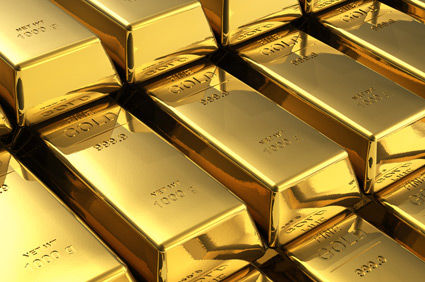Gold
WORLD GOLD
Gold already mined or to be mined is a geopolitical issue

The quantity of gold in the world is estimated at over 250,000 tonnes.
197,576 tonnes of gold, representing two thirds of the earth's gold, have been mined throughout history.
54,000 tonnes, representing a third of the earth's gold, remain to be extracted from underground reserves.
On August 5, 2020, gold hit the highest price on record at $ 2,048 per ounce.
This is why both the physical gold already mined and the reserves still to be extracted are a geopolitical issue, each country trying to strengthen its position on the gold market.
Gold, a safe haven reinforced by COVID
According to Madame Wu Xiaoling, former vice-governor of the People's Bank of China (BPOC), in this country as elsewhere on the planet, gold is recognized as a safe haven asset, very liquid, which does not involve any counterparty risk and takes makes sense in times of uncertainty.
Gold is also often decorrelated from other assets. In other words, when the prices of stocks and bonds fall, the price of gold tends to rise.
Amid growing economic and geopolitical uncertainty, gold is attracting growing interest as an asset class in its own right, especially after a decade-long bull market in equities.
Against the backdrop of strengthening gold as a reserve asset, the international situation has become favorable for buying gold. This development is reinforced by the health crisis due to COVID-19.
In this regard, in July 2020, the World Gold Council pointed out: “The pandemic will probably have a lasting effect on the allocation of assets. It will also enhance the value of gold as a strategic asset ”.
Central bank strategy
Gold, target of central banks
Interest in gold as a reserve asset was fueled by the tendencies of central banks to buy more gold than ever before since 1971.
After 2000, central banks became buyers of gold. The search for protection of gold against internal and external shocks and the pledge of confidence for the outside world then placed gold in third position of reserve assets.
In 2018, central banks added more gold to their international reserves than since the end of Bretton Woods almost 50 years ago.
Small producers
Small producers contribute to the national effort
Among the purchasing strategies, some central banks acquire gold through local production. In this case, the state institution purchases gold using the local currency preferred over an international currency.
Support for small producers to increase central bank reserves contributes to the sustainable development of countries, in particular by supporting the economy of rural areas and the secondary economy of associated communities.
Since 1991, the example of the local gold purchase program by the central bank of the Philippines has been emblematic. Unrefined gold is purchased directly from miners and guarantees the prevailing international gold price for transactions, converted into Philippine pesos.
Then the central bank refines the gold to international standards, keeps it in its reserves or sells it on the international market. Such programs are also implemented by Mongolia and Russia.
These examples can give new impetus to countries with important extractive resources, particularly in Africa, to contribute to the sustainable development of countries and the well-being of their populations.
Africa's sustainable development
Subsoil resources, a means of sustainable development
African countries still depend on the support of the major international financial institutions, set up after the Bretton Woods agreements which shaped the main lines of the international financial system in 1944.
Many leaders believe that Africa can no longer make taxpayers dependent international budgets for sustainable development. Today, this continent must be able to finance its basic needs by exploiting the mineral resources of its subsoil.
Africa must move towards an independent model of sustainable development: developing the subsoil to equip the soil with infrastructure and equipment to ultimately benefit populations, particularly young people.
Africa's gold
The gold trade often escapes African countries
Africa still has 30% of the world's reserves. This potential of extractive natural resources can represent an important source of resources for developing countries.
However, if reserves are large, when the price of gold and demand is soaring, Africa does not take sufficient advantage of these opportunities.
On this continent where artisanal mining is widespread, trafficking and smuggling are intensifying, complicating the issue of gold trading and its profitability for the communities that extract them and the states that supervise them.
African affiliates of Al-Qaida and the Islamic State, paramilitary militias attack industrial mining operations, extort small artisanal mining operations and deprive state finances of revenue.
In the Democratic Republic of Congo, artisanal mining is dominated by smuggling. Local prices offered by buyers have fallen. Artisanal miners are the big losers. Commercial exchanges escape the Congolese administration. Commercial transactions lack transparency and leave official banking networks.
In Sudan, smuggling also results in a significant loss of state revenue. Prime Minister Abdallah Hamdok is determined to formalize and liberalize the gold trade and bring the income back home. But many gold mines are controlled by shadow companies with links to the security services of the former regime of President Bashir.
The United Arab Emirates annually imports more than 450 tonnes of gold from Africa. The gold trade is believed to represent around 20% of the country's economy. But the difference between the ratio between the quantities of gold exported and purchased raises the doubt. Some organizations have placed Dubai under surveillance, complaining of gold smuggling and money laundering.
As prices soar, South African gold production collapses. For reasons of profitability, large companies are changing their strategy. Other countries where extraction is still artisanal are making their mark on the gold market: Ghana, Sudan, Burkina Faso, DRC. In this market, the Central African Republic, where between 20 and 30% of the population depend on artisanal mining, the country has a good card to play.
In this context, artisanal gold mining in Africa needs support and its trade needs transparency. To this end, DiamaaGold is launching an initiative to digitize gold mined and still to be mined, of which the Central African Republic is the first target.
A global network
Build a global network of gold mining, supply and distribution
DiamaaGold accumulates physical gold from its direct purchases and futures traded in Africa, then issues digital gold in the form of stablecoins backed either by collected gold or by estimated gold resources.
From physical gold to security tokens
As gold is collected from cooperatives and artisanal miners, DiamaaGold issues AUT Gold Trade stablecoins guaranteed by certified physical gold, stored with our partners and exchangeable on your wallet and on the Blockchain. DiamaaGold also issues AUJ stablecoins aligned with the value of gold, guaranteed by gold to be mined from concessions granted by the government and exchangeable on your wallet and on the Ethereum and Stellar Blockchain.
DiamaaGold's AUT Gold Trade model
DiamaaGold's AUT Gold Trade model
DiamaaGold creates the AUT Gold Trade financing option which provides liquidity, security and value to potential buyers and owners of gold.
Gold trading is an activity whose regulations vary from state to state. When some control and supervise gold trading, others struggle to formalize the market. The benefits of this trade then escape the communities that generate it as much as the state that regulates it.
This is why the scarcity of gold supposes implementing a transparent supply. To this end, DiamaaGold relies on a network of cooperatives and artisanal miners, with the support of government authorities whose interest is in formalizing the market. If DiamaaGold's medium-term objective is to involve several African countries, the Central African Republic is the immediate objective.
By relying on these local producers, DiamaaGold sets up a supply network in order to create its own gold reserves.
These are used to support the issuance of digital gold in the form of AUT Gold Trade stablecoins for an amount equivalent to physical gold mined at a prime rate of minus 10% to the market.
The AUT Gold Trade model of DiamaaGold mainly benefits owners of AUT Gold Trade stablecoins who enjoy a large bonus in relation to the market.
The gold of the basement
From mine to security tokens
By leveraging the underground gold still to be mined, DiamaaGold issues AUJ Gold Jäger stablecoins to help build a sustainable mining ecosystem that benefits local communities and developing countries. DiamaaGold's AUJ Gold Jäger model
DiamaaGold creates the AUJ Gold Jäger financing option for cooperatives and miners, which also provides liquidity, security and value to investors and benefits local cooperatives and producers.
DiamaaGold negotiates gold mining contracts with co-operatives and miners, and permits with government authorities and then uses the volume of gold contracted to issue AUJ Gold Jäger stablecoins at a prime rate of less 15% compared to the market
AUJ Gold Jäger stablecoin owners can trade them on the DiamaaGold network and the Ethereum and Stellar blockchains.
DiamaaGold's AUJ Gold Jäger model benefits all associated partners. Cooperatives and farmers find investment opportunities in their businesses. AUJ Gold Jäger stablecoin owners benefit from very significant bonuses compared to the market. DiamaaGold benefits from profitable margins. Government authorities benefit from mining scheduling, system transparency and potential fundraising.
Gold quality
99,5% minimum
The physical gold held by DiamaaGold will be of minimum grade 99.5% refined in the Central African Republic or Tanzania. Upon request, stablecoin owners will be able to benefit from physical gold of 99.9% refined quality at our partner in Tanzania. From the mine to the refinery
DiamaaGold has signed contracts with several cooperatives, including the Cooperative Minière Catholique Centrafricaine responsible for recruiting other cooperatives and operators.
DiamaaGold is in negotiations with partners from neighboring countries, in particular the Democratic Republic of Congo, to conclude other agreements.
The collected gold will be refined in the DiamaaGold refinery established in Bangui or in the refinery in Tanzania



